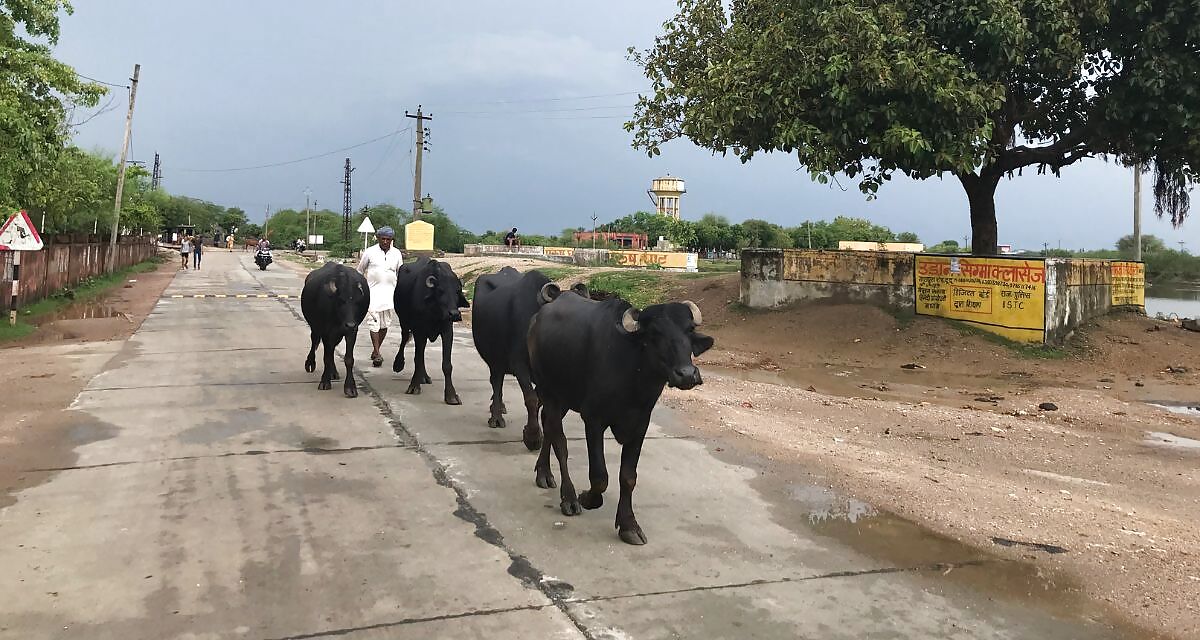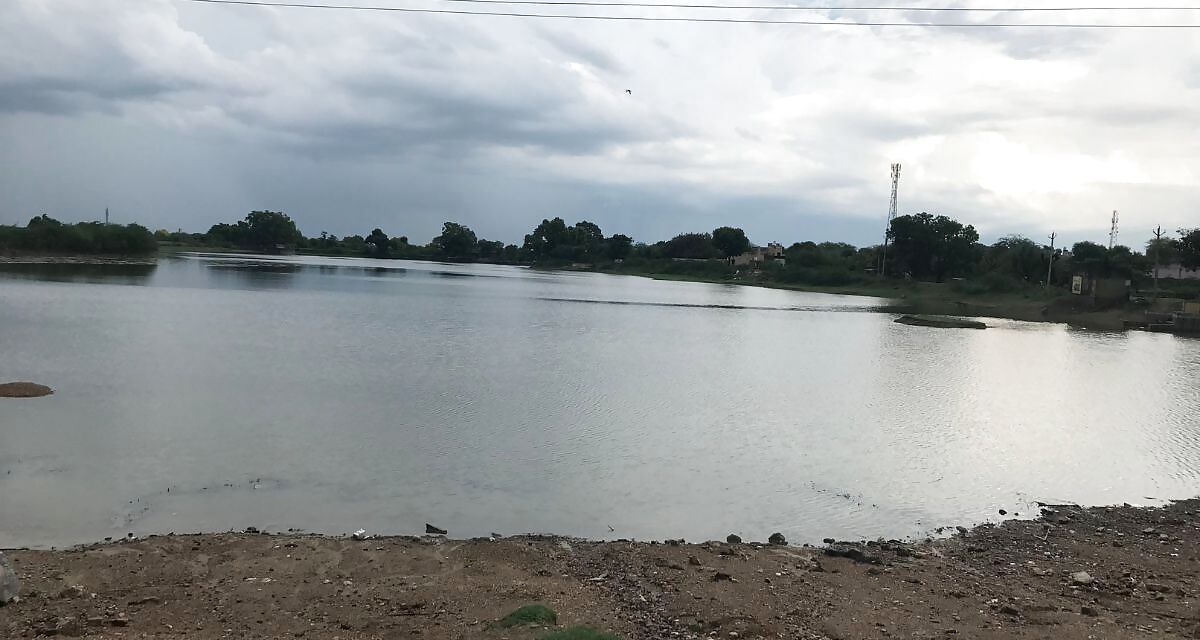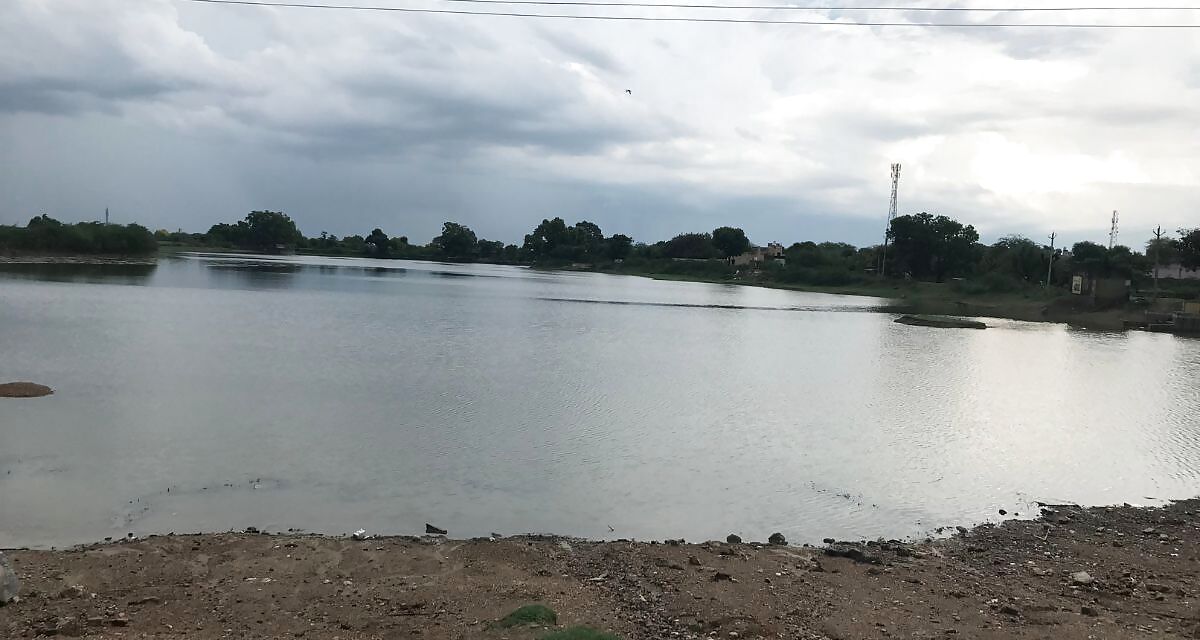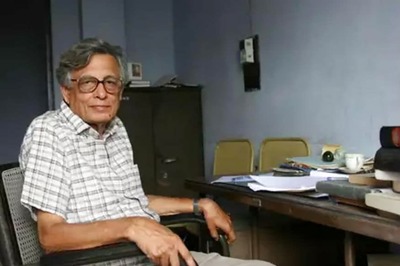
views
Ram Chandra (50), a farmer from Mali community, has 2.5 acres of land in Dudu’s Laporiya village. He grows moong (green gram), sarso (mustard), jowar (sorghum) and bajra (pearl millet) there, while his goat and cattle herds supplement the income. Despite dwindling rainfall over the years, finding fodder for animals has not been much of a challenge for Chandra, thanks to the chaukas that the villagers have been maintaining for decades.
Livestock rearing is still one of the main livelihood options in Rajasthan but in several places, a shortage of grazing spaces and drinking water has dented its prospects. “Earlier, we had to move the animals to far-off places in search of pastures,” Chandra told 101Reporters.

But the saving grace for the cattle farmers here were chaukas, which were first introduced to the place in the 1980s. At that time, the local youth were looking for ways to boost water supply through harvesting projects, with an emphasis on shramdaan (voluntary labour). The informal group soon registered themselves as Gram Vikas Navyuwak Mandal (GVNML), Laporiya, an NGO now led by brothers Laxman Singh and Jagveer Singh.
In the late 90s, Laxman and fellow villagers repaired the local talaab (tank) and built two others. That was just the beginning. “When we started out, many people were curious. Some lent us a helping hand, and their numbers increased with time,” said Jagveer, the GVNML CEO.
Together they thrive
Once the water problem was sorted, they focused on the fodder crisis afflicting the village by introducing the chauka system of water harvesting to the pasture lands. The structure comprises ridges of mud in a rectangular shape, with one side open. Within it are rows of small tanks to hold rainwater. It is built to slow down the flow of rainwater along a slope, giving it time to filter into the ground, ensuring quick regrowth of grass.

Each chauka is designed to suit the slope of the pasture on which it is located and when combined, they form a large structure. “It was designed in such a way that the grass retained moisture, and could grow back in three days once the animals graze,” Jagveer explained.
As the availability of fodder has a direct impact on both the quality and quantity of milk produced, chaukas have undoubtedly contributed to delivering a stable income to the cattle farmers of Laporiya.
“On an average, a farmer, who had earned only Rs 10,000 to Rs 12,000 per month a decade ago, is now able to get anywhere between Rs 30,000 and Rs 40,000,” said Laxman, who has big land holdings and a large herd of buffaloes and cows under his care.
He remembered the time when half the village was empty. “Most of the farmers had left to find other sources of income as nothing would grow in their fields. Many even sold their cattle to survive.”
Laporiya is the only village in the block to have a milk chilling plant, which was established a decade ago. The second such plant is in Dudu, which catered to other villages. “The administration thought it was apt to start a plant here as we were producing so much milk,” Laxman said.
Born in Laporiya, the chauka-allied rainwater harvesting structures eventually made their way to 58 nearby villages (155 villages where only chaukas were developed). Given its success, it was easy to convince people. “We have asked them to set aside a few hours for a period of two months every year, to take forward the work on water and pasture conservation,” he said.
The task involved construction and digging, as and when required, in addition to surveys and cleaning of the village’s water sources. Laxman said the work is assigned according to the requirement and availability of volunteers.
Chandra said that the chauka system was established when he was young and he has seen it help farmers like him. “With the help of chauka, we have green grass long post the monsoon season. Abundant grass grows in the area surrounding the water bodies, which are part of the chauka system, where we take our cattle grazing,” he said.
Gopal Gujjar, a former sarpanch and current panchayat member of Laporiya, who has been involved extensively in the work on chaukas, said the whole process has helped the villagers reconnect with nature. “We worked in groups not just to launch water recovery structures here, but also to spread the word about its success in other villages through rallies and street plays.”
Trouble on the horizon
Today, the chauka system is under stress. The pasture conservation techniques under the model are no longer able to withstand the tides of climate change. Their talaab has gone defunct; the chaukas are still functioning but they have had to make several modifications and adaptions over the years like building chaukas on undulating terrain, on both sides of a slope, etc.

The lack of rain has become a major concern. According to reports, Laporiya’s average rainfall in the last 18 years has been less than 500 mm a year. In recent years, it has further come down to just about 300 mm. In July, the village received less than 75 mm of rainfall! “We need at least 200 to 250 mm of rainfall to conserve water for year-round fodder growth,” Jagveer said.
The chauka system has been designed in a way to facilitate the growth of fodder even with less rain, however, whenever that happens, the pasturelands take a longer time to replenish. “The only difference is that when there is adequate rainfall the grass grows in three days, but it takes seven days to grow if there is less rainfall,” Singh explains.
“We witness only brief showers, though it is monsoon time,” says Sita Devi, while getting her buffaloes and goats back home from grazing. “But it is raining at least. Our animals will be able to get by somehow,” she added.
The villagers have only two more months of rainfall to look forward to. When there is not enough rain, grazing in pastures between October and June gets affected. So farmers are forced to source dry fodder, which is in short supply and hence expensive now.
According to Jagveer, the situation is worsening across Rajasthan and the lack of support from the government has aggravated the issue. “The state government has neither intervened nor thought about finding solutions for the issues farmers face, especially those into animal husbandry.” Elaborating, he said, “Vet services are entirely private now; government veterinary hospitals are either closed or barely functional. These services should at least be subsidised. And whether it’s making grass seeds available for grazing land or helping create structures like chaukas, the government is not helping.”
Even for the simple and obvious task of bringing the building of chaukas under MGNREGA, they have to move mountains, he said. “At times, we have even had to approach the Chief Secretary!”
(Nikita Jain is a Delhi based freelance journalist and a member of 101Reporters, a pan-India network of grassroots reporters, where this article was originally published.)
Read all the Latest India News here















Comments
0 comment